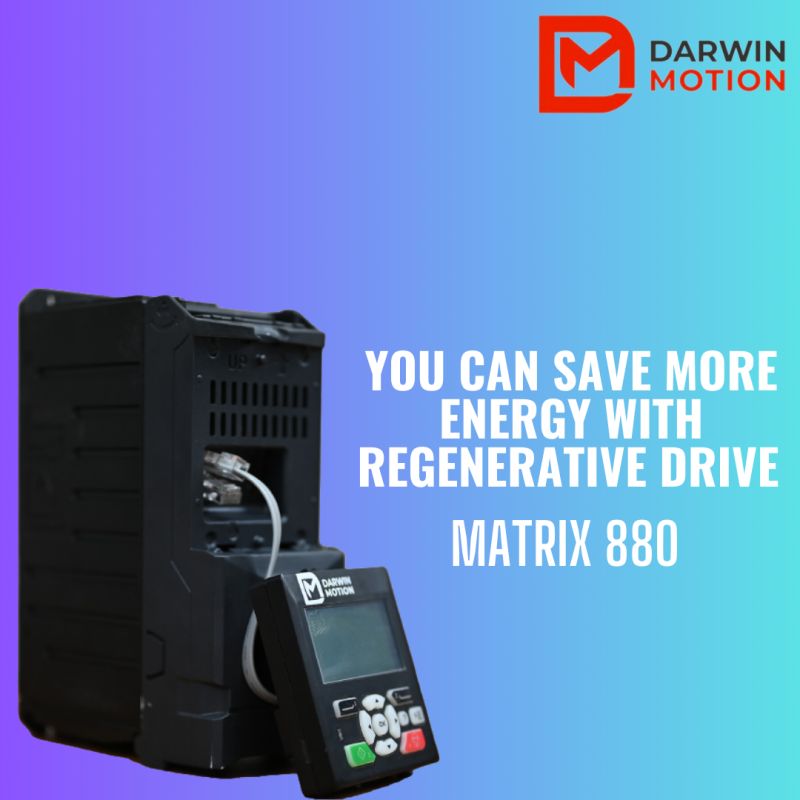Posted on 5th Dec 2023

A Variable Frequency Drive (VFD) is a device used to control the speed of an electric motor by adjusting the frequency and voltage supplied to the motor. It's a crucial component in various industrial and commercial applications for optimizing energy consumption and improving process control. If you're considering buying a VFD, Darwin Motion share a guide to help you make an informed decision:
Ensure that the VFD Micro Drive- Matrix 900 is compatible with the type of motor you have (induction, permanent magnet, etc.).
Check the VFD specifications to match the motor power (in horsepower or kilowatts).
Verify the voltage and power requirements of your application and choose a VFD DR Matrix 350 / Solar Drive that matches these specifications.
Consider any potential future changes in power requirements to ensure scalability.
V/F Control (Volts per Hertz) is standard, but some applications may benefit from vector control for more precise control.
Sensorless vector control can be a good compromise between simplicity and precision.
Select the appropriate enclosure type based on the environment where the VFD High Frequency Drive - DR Matrix 500 will be installed (e.g., NEMA 1 for indoor use, NEMA 4X for outdoor use).
Ensure the VFD High Performance Drive - DR Matrix 680 has sufficient overload capacity to handle the application's peak loads.
Check if the VFD supports the communication protocols needed for integration with other control systems (e.g., Modbus, Profibus, Ethernet).
Evaluate the ease of programming and the user interface. Intuitive interfaces can simplify setup and troubleshooting.
Look for VFDs with parameter storage and retrieval capabilities for easy configuration backup.
Look for built-in protection features such as overvoltage, undervoltage, overcurrent, short circuit, and overtemperature protection.
Choose a VFD Regenerative Drive - DR Matrix 880 with energy-saving features, such as sleep mode, which reduces energy consumption during periods of inactivity.
If your application requires braking, check if the VFD supports dynamic braking or regenerative braking.
Ensure that the VFD complies with industry standards and has relevant certifications to meet safety and performance requirements.
Consider the availability of technical support, documentation, and warranty offered by the manufacturer.
Compare prices and features across different VFD models and manufacturers. Consider the long-term cost savings from energy efficiency.
Ensure that the VFD comes with clear installation instructions and consider the ease of maintenance.
Anticipate future needs and check if the VFD can accommodate potential expansions or modifications.
By carefully considering these factors, you can choose a VFD that best meets the specific requirements of your application while ensuring reliability, efficiency, and ease of use. Always consult with a qualified electrical engineer or technician if you have specific technical questions or concerns.